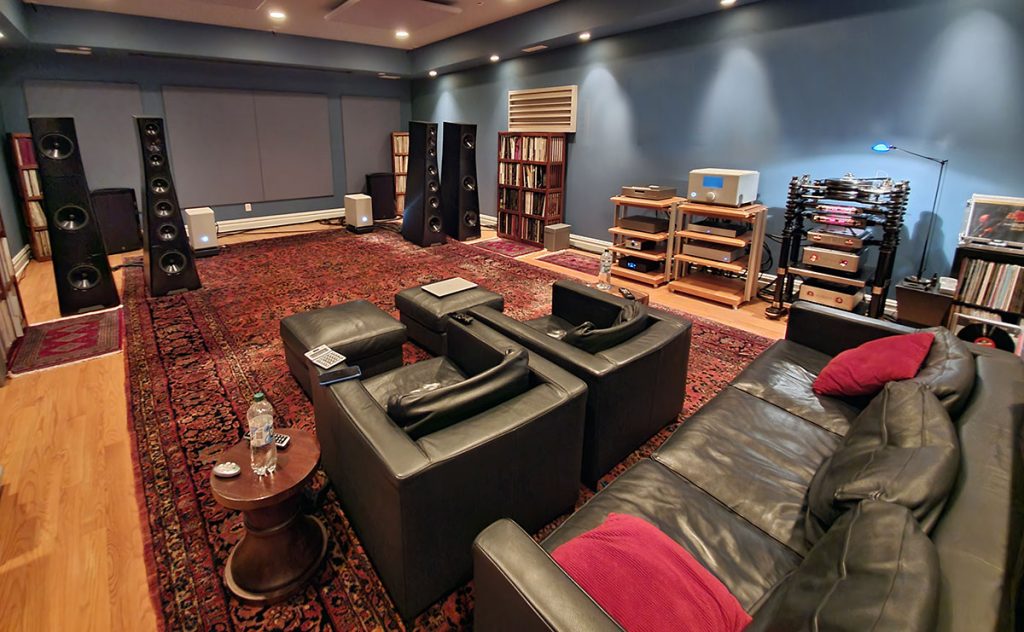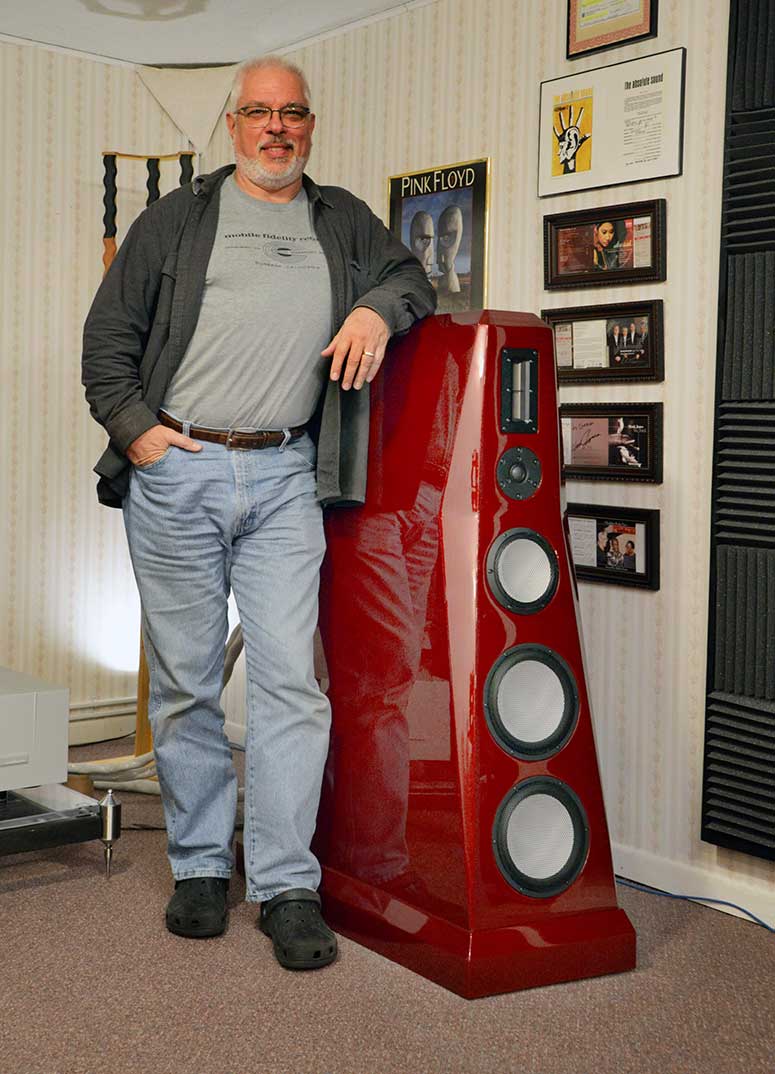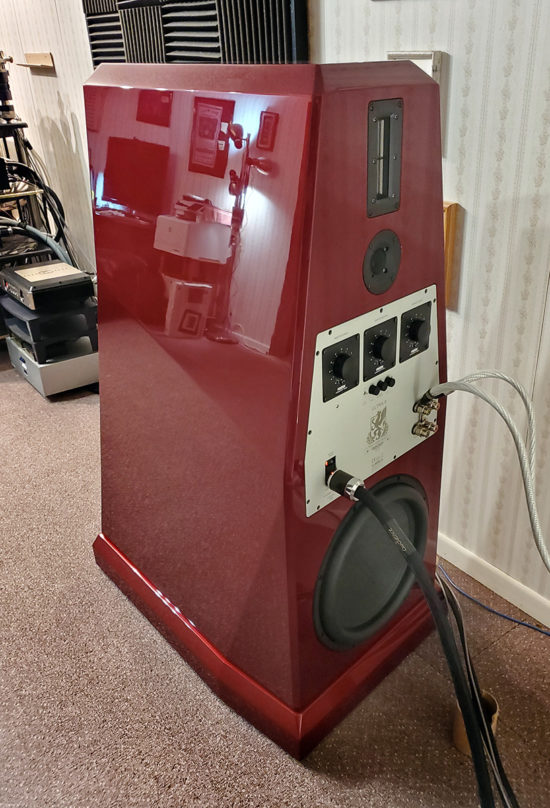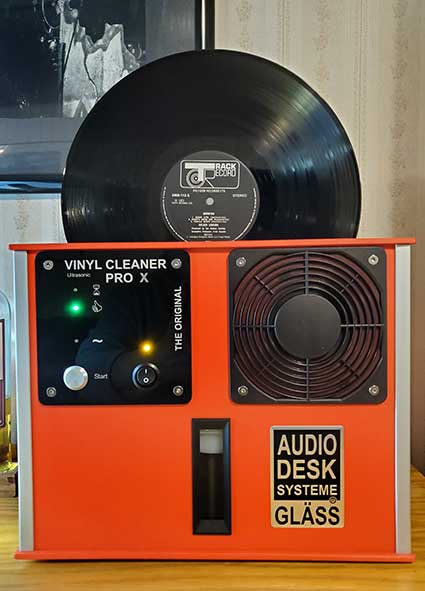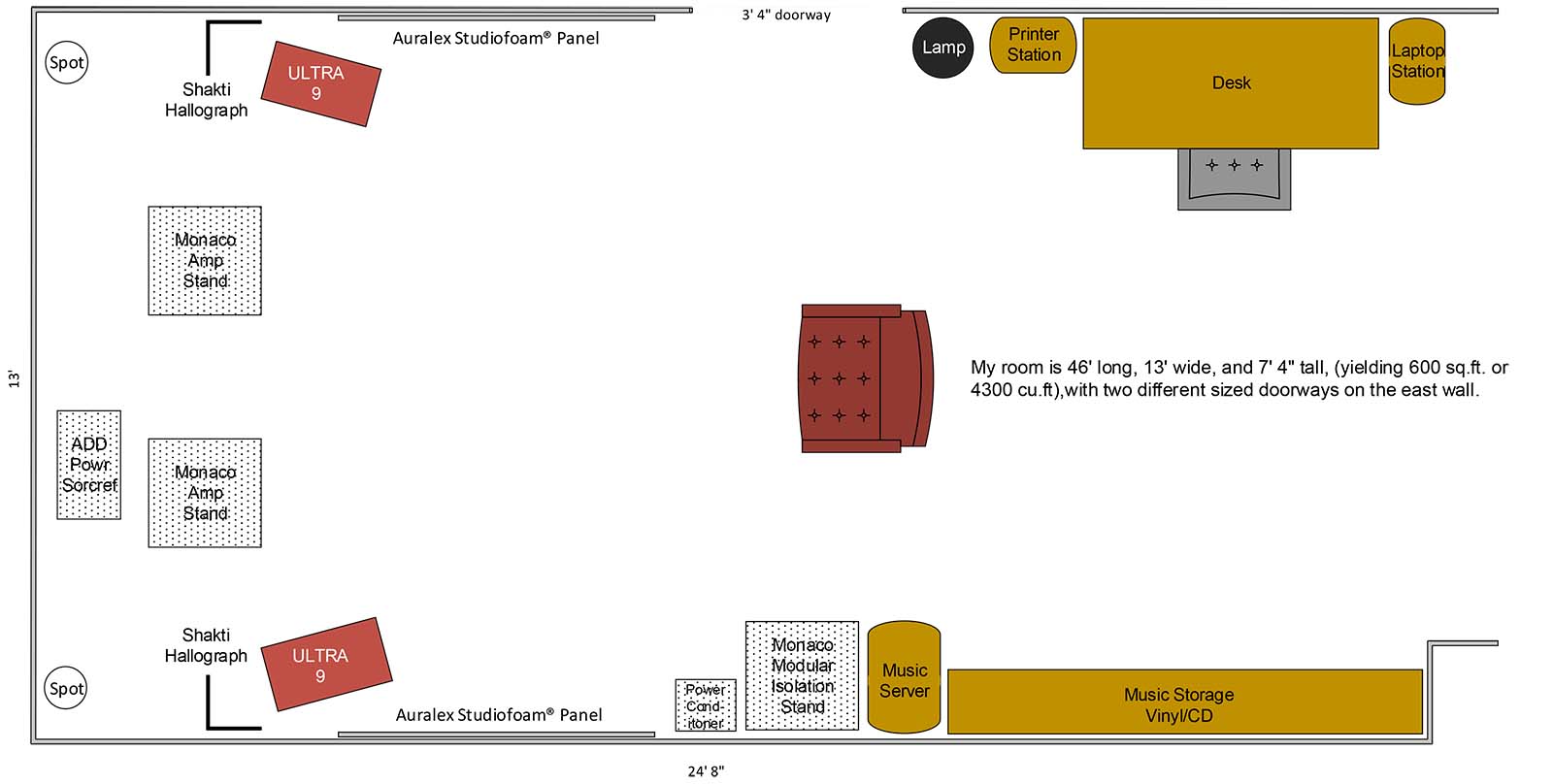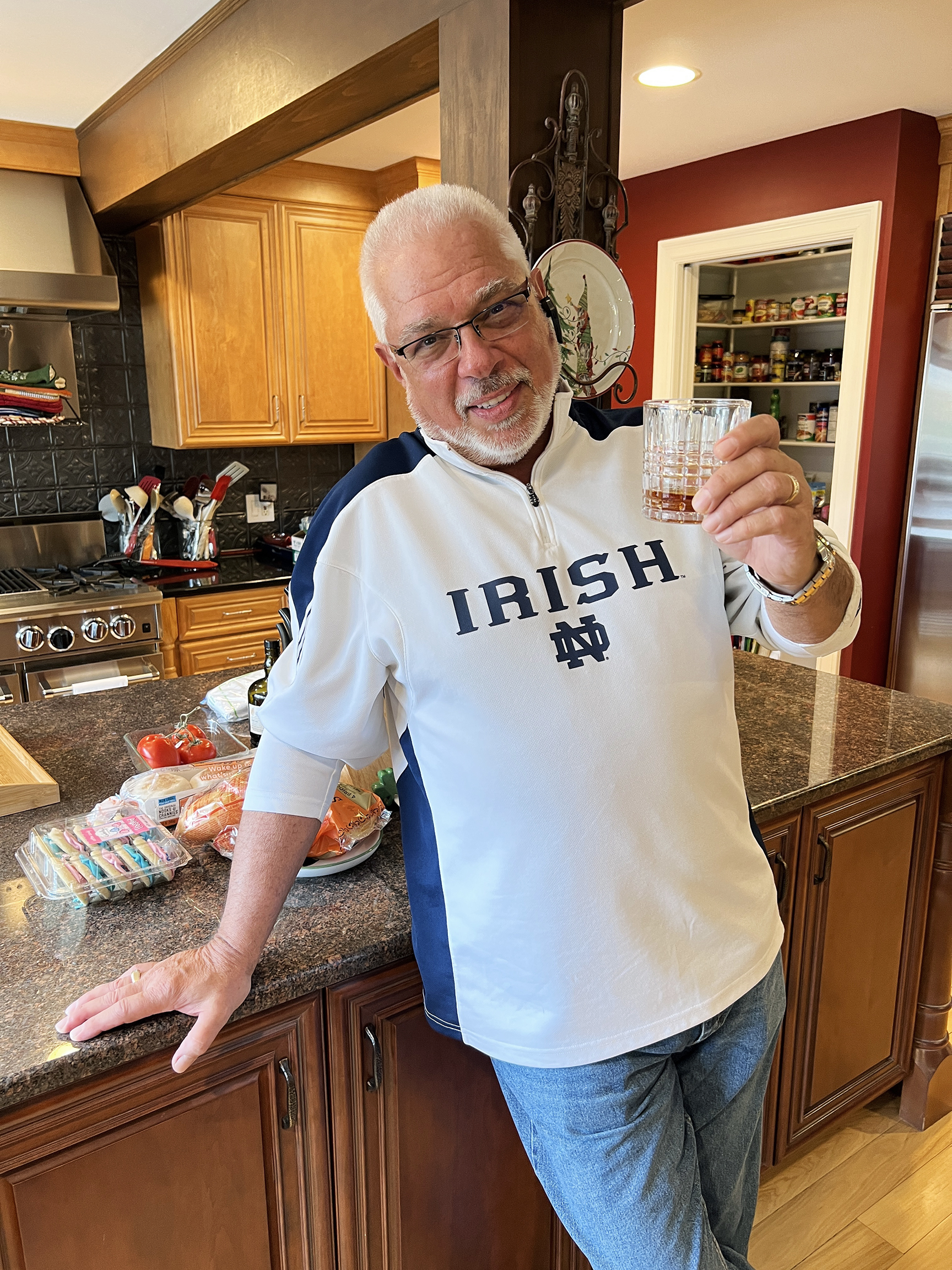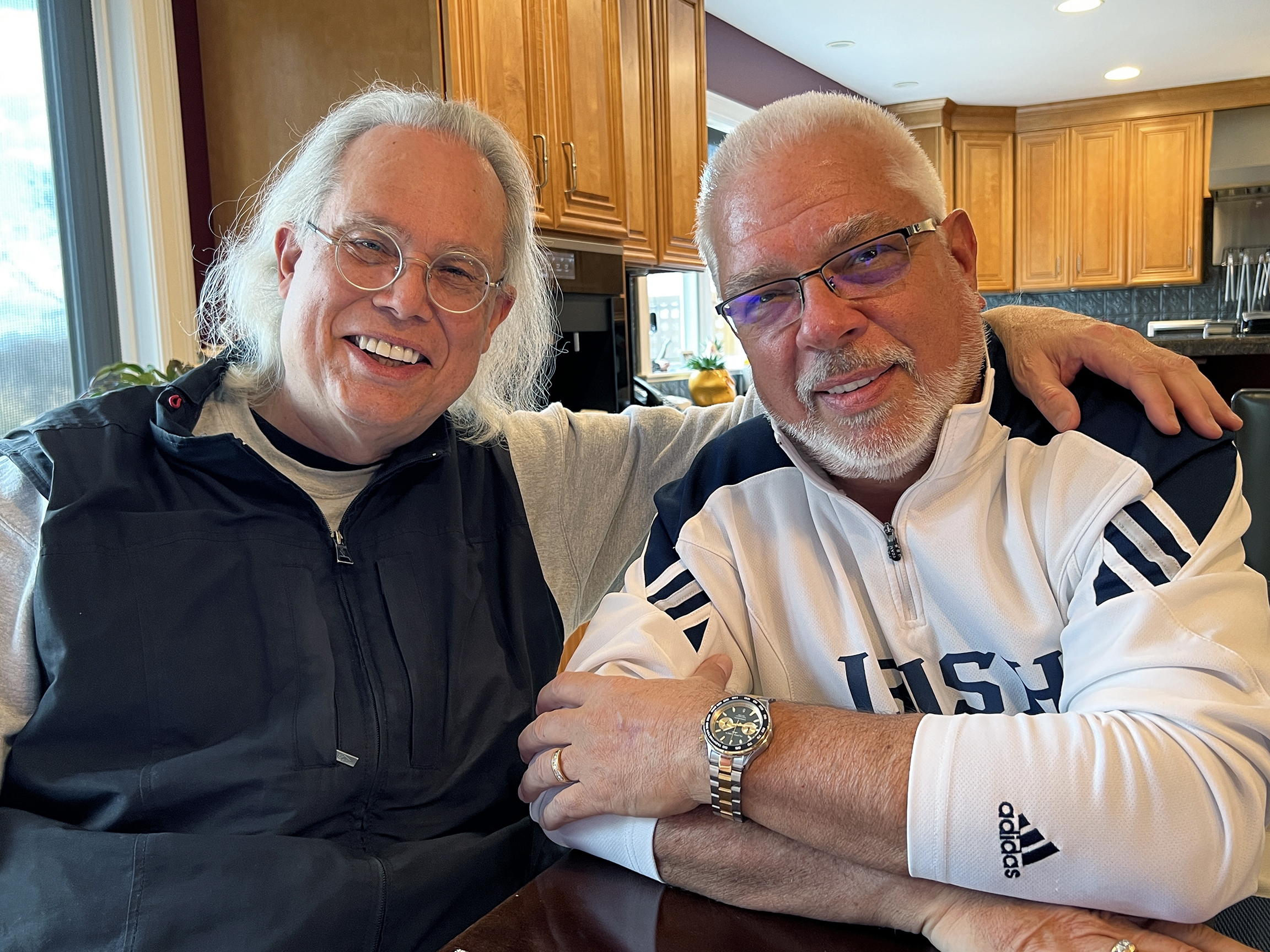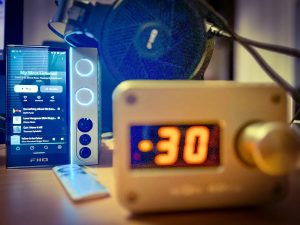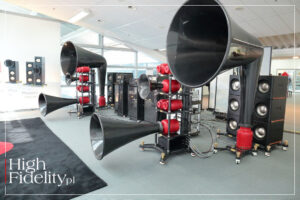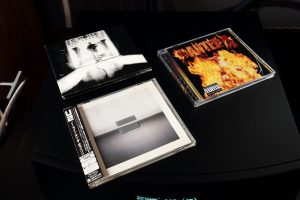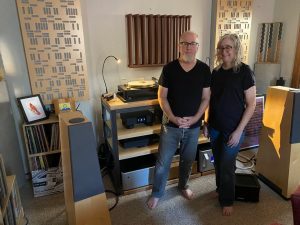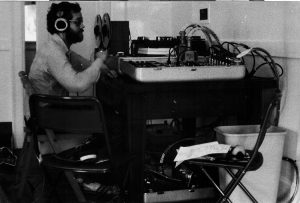
Greg Weaver, a fresco portrait. Chicago, 2018 (photograph and fresco image processing by David W. Robinson)
It should come as no real surprise that paradigm shifts in the performance capabilities of hyper-audio gear come rarely. In my fifty-plus years in and around this industry, I have witnessed scant few. The first came in the early 1970s, when I heard the Phase Linear 700 amplifier (which I wrote about in The Absolute Sounds Illustrated History of High-End Audio Volume Two: Electronics HERE), followed shortly by the 700B iteration. But after having spent some twenty hours listening to the new KRONOS Discovery by special invitation from Bill Parish of GTT Audio, starting on Wednesday, August 25th, I am both honored and privileged to inform you that with its audition, I have witnessed the most significant and indisputable performance advance within the audio arts to occur over the past decade, if not over the entire course of my lifetime.
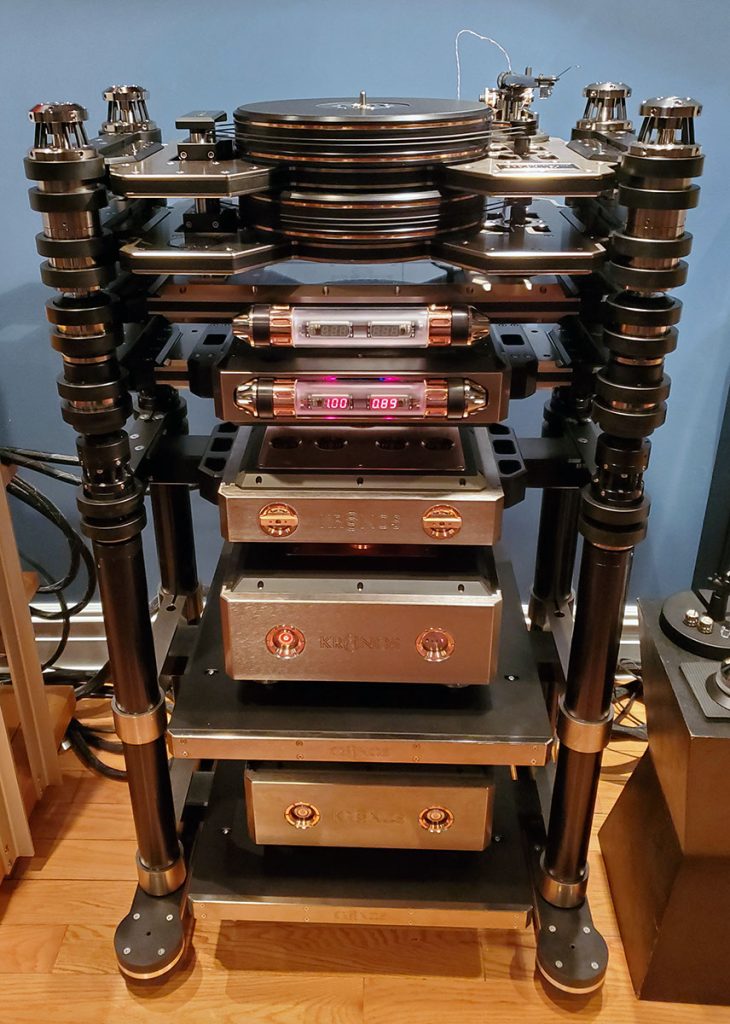
The KRONOS Discovery Turntable System at GTT Audio: a picture of the truly awesome!
After my listening that Wednesday, the following morning, August 26th, at 8:08 AM, I posted this preface to a statement on Facebook. "Welcome to the future of reference level LP playback… With only a brief exposure so far (I'm in for the next three days of extended listening) to the new groundbreaking Kronos Discovery turntable, I can say that its level of performance completely resets the bar for what can be accomplished with music playback in a hyper-audio two-channel system.

Bill Parish and Greg Weaver, AXPONA 2018 (photograph and image processing by David W. Robinson)
Discovery is the result of an exhaustive and all-encompassing reexamination of every single design parameter and technique implemented in Louis Desjardins' original pioneering KRONOS Limited Edition Pro, my current reference turntable. What the Discovery reveals from LP playback so considerably advances upon what has been possible before its creation that it cannot be viewed as an augmentation or enhancement; it simply redefines what is possible. After turning his focus on honing and perfecting this remarkable Event Replication device over the past two years, the KRONOS Discovery turntable defies comparison to all other world-class turntables in my experience, creating a class of its own.
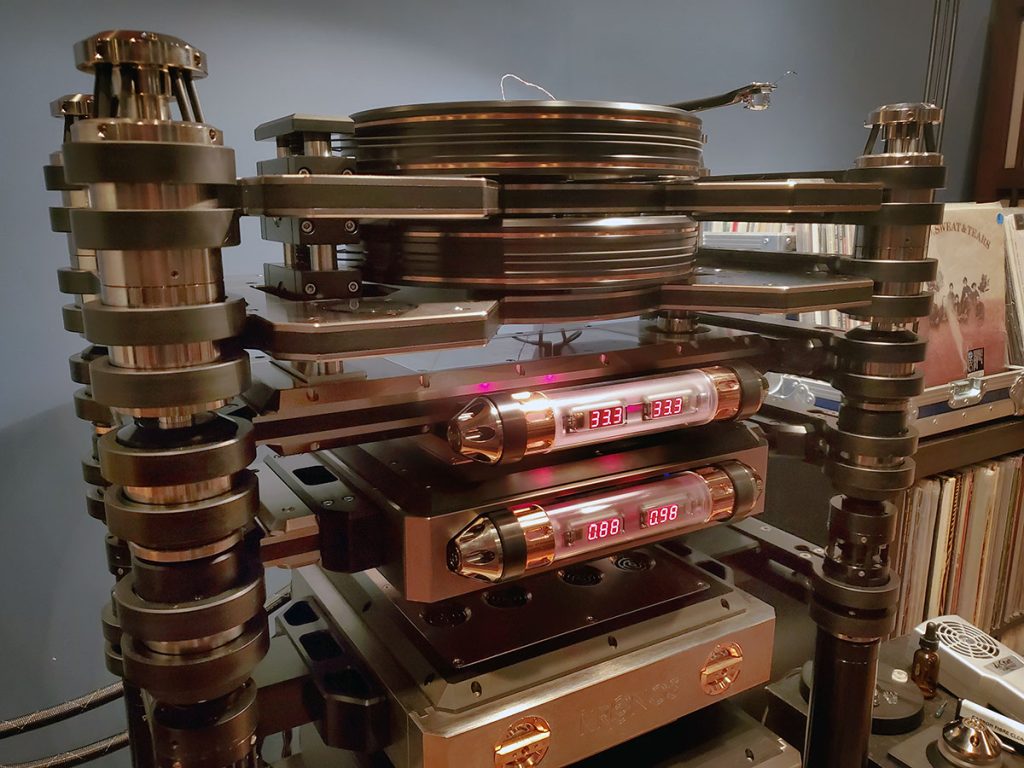
I understand that those who haven't yet heard Discovery will be quick to dismiss what I am saying and choose to conclude that my assertions here are nothing more than excited exaggeration and hyperbole. I assure you; IT IS NOT! In fact, though I was privileged to be the first journalist to hear and relate my tale of Discovery with the audio world at large, every subsequent reviewer and journalist to have access to it has expressed the same opinion in their own voice, specifically, that it defies comparison, and simply constitutes a class unto itself.
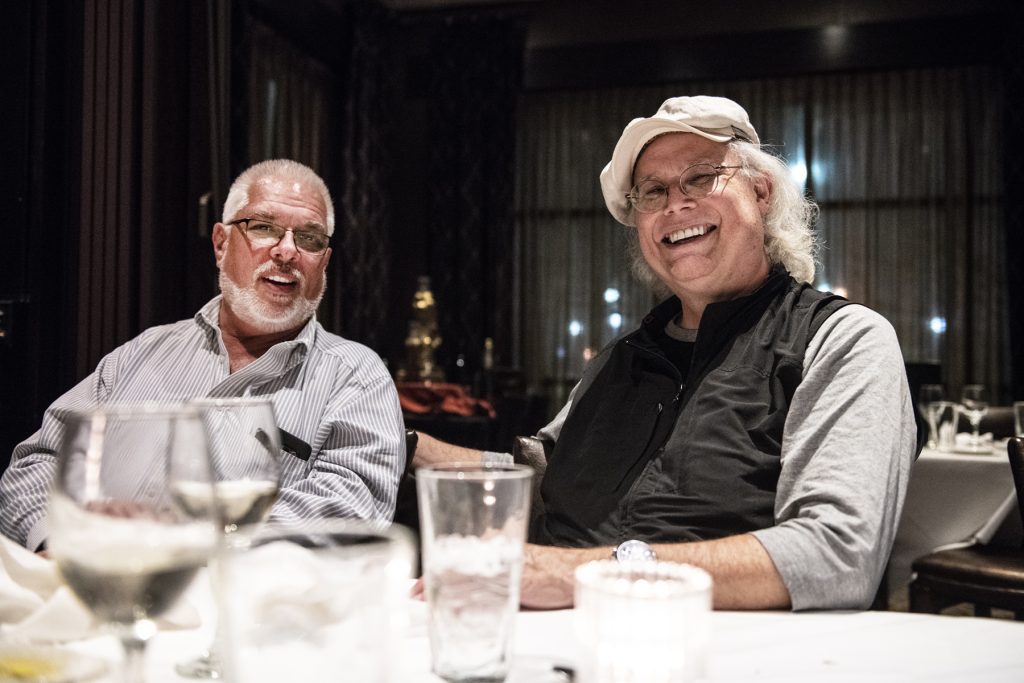
Greg Weaver and Dr. David W. Robinson at AXPONA 2018 in Chicago (photograph by Joe Kubala)
Respected journalists as prominent as Dr. David W. Robinson, Positive Feedback's Editor-in-Chief, Maurice Jeffries, Positive Feedback contributing writer and reviewer, and Alan Sircom, Editor-In-Chief of the absolute sound's British magazine Hi-Fi+, have all found themselves expressing their own version of my original Facebook statement from the end of August, that the KRONOS Discovery "resets the bar for what can be accomplished with music playback in a hyper-audio two-channel system."
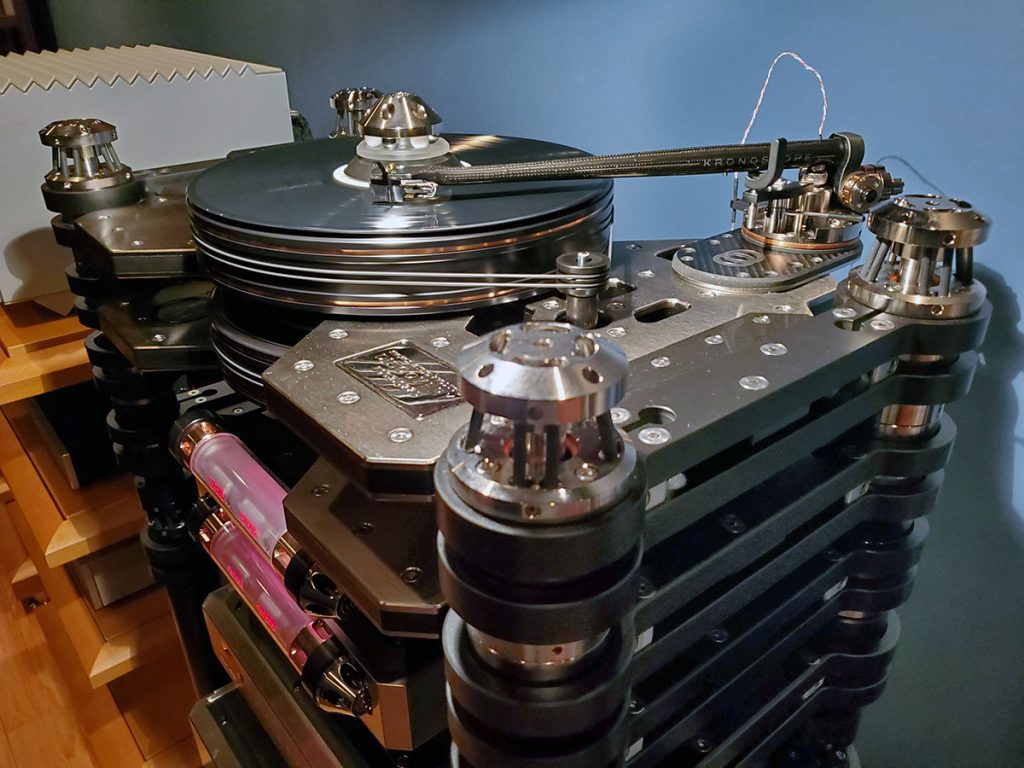
The KRONOS Discovery full Monty includes this ravishingly new one-hundred-thousand-dollar contra-rotational pattered turntable, its distinctively reimagined seventeen thousand five-hundred-dollar Kronoscope pickup arm, its inaudible twenty-thousand-dollar Super Capacitor Power Supply, the KRONOS forty-five thousand dollar, dual-mono tubed phono stage, with external power supply, and its inclusive, custom-built fifteen-thousand-dollar isolation stand. While the whole system comes in at just under two-hundred thousand dollars, you may order a la cart, for instance, purchasing just the Discovery, Kronoscope, and SCPS for a paltry one hundred thirty-seven thousand five hundred dollars!
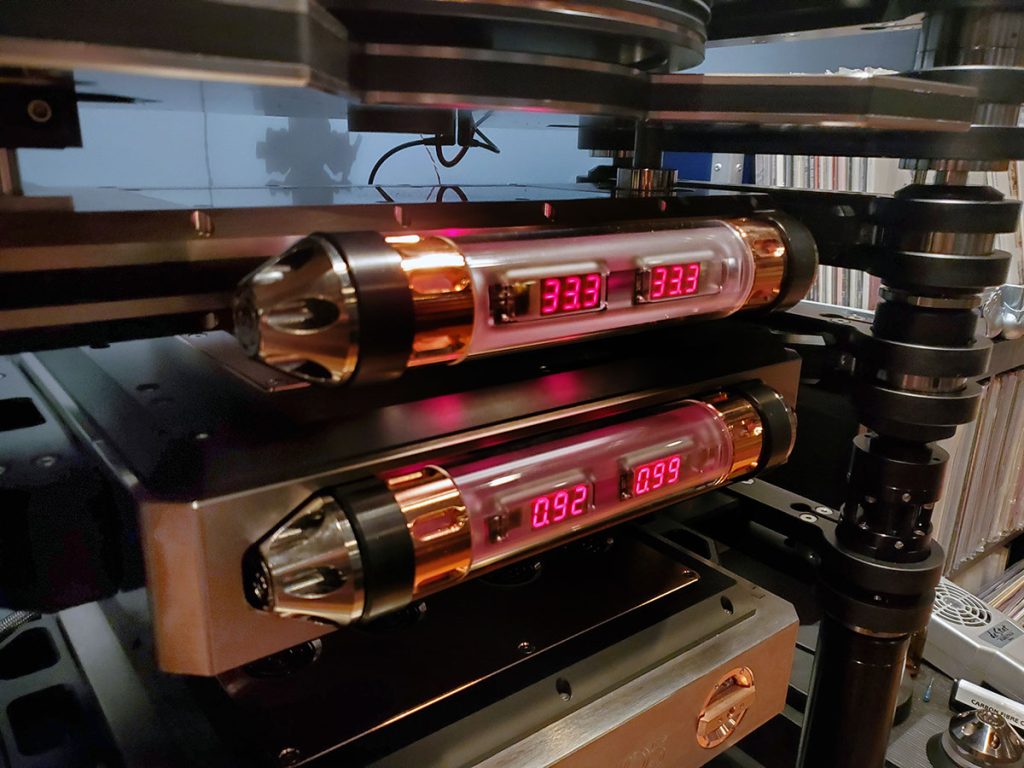
Now, if you've seen the video I released to mark the launch of Discovery back on September 5th on my YouTube Channel (HERE), recorded immediately after my first initial listening sessions on August 25th and 26th, you will see that I was still reeling from the staggeringly elevated degree of performance I was hearing. The looming sense of awe and my inability to articulately express my impressions of what I was hearing is understandable, because at that point I simply had not even begun to find the vocabulary necessary to describe what I was hearing. As Bill Parish and I explain in that video, I am just not sure that our current hyper-audio argot contains the lexis to allow us to accurately and succinctly convey what Discovery brings to LP playback.
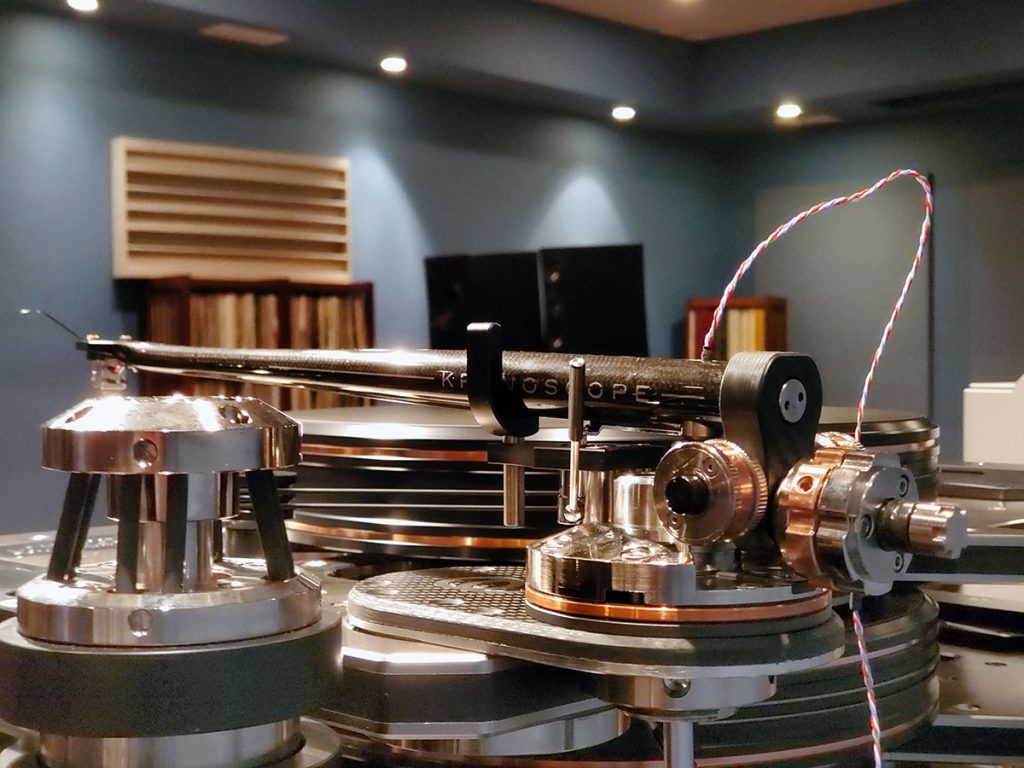
Even now, as hindered as I may be to entirely capture and convey Discovery's bounty of expression, to my ears, it presented an entirely fresh and previously unattainable level of musical experience, a new pinnacle of expressiveness and communication, one so articulate, so informative, so inspiring, that it was more than merely revelatory; its resultant performance is transformative. I know this will raise more than just a few eyebrows, but it repeatedly transcended the sound of master tape playback. The signature sound it routinely delivers is the most removed I've ever heard from the sensation that you are listing to a recording. What it recreates is more akin to what you would hear listening to the live microphone feeds at a session rather than the resultant master taped recording from those feeds. In essence, it is the closest approximation I've yet heard from any source to hearing a live performance in a real space, bar none.
First, Discovery is SO silent. While this was also a very apparent and welcomed attribute of the Pro, and even the overachieving Sparta that I lived with for six years, Discovery presents with such an amazingly black, stark background, yielding a noise floor so decidedly defeated, that it is all but imperceptible. The grooves, and their resultant "rushing" sound that we have all grown to equate with vinyl playback (HERE), simply have all but vanished, revealing a starkly, and startlingly, live sound.
Recording permitting, Discovery exhibits this incredible ability to more finely differentiate and reveal the ever so specific size and locality, and with some recordings, even the shape, of each instrumental voice it regenerates. EVERYTHING on an LP is so much more completely rendered and so uniquely individualized, and I don't mean artificially spot-lit, etched, or in any way unnaturally presented, that my jaw falls slack.
Recordings I've had for some 50 years, the original 1970 UK Dick James Music pressing of Elton John's third studio release, Tumbleweed Connection, for example, are rendered with a newfound individuality and specificity of the voices of the backing vocalists, or the strings or horns of the inspired Paul Buckmaster arrangements, allowing it to expose an ENTIRELY newfound and highly emotional perspective on the performance. Each individual voice, while being more plainly sculpted, more accurately and naturally regenerated in its own space, with distinct individuality and verve, is at the same time permitted to contribute more authentically to the whole of the sonic tapestry. In short, a group of three violins sounds much more like three individual violins playing as a collection rather than an amorphous non-descript "group" of violins, contributing to a conspicuously more realistic experience.
A view of Bill Parish's reference listening room from the left rear…an incredibly fine setting!
Now, don't let my zeal over its superior voice specificity and recovery of previously masked detail from LP grooves lead you to believe there is any artificiality, etching, deviant, or contrived aspect to its voice. As revealing and articulate as it is, at the same time, it renders all of this in an utterly natural envelope, with the most organic, broadband ease of presentation I've yet heard from any LP playback system.
When I played my 1994 DCC remastered reissue of Elton John's 1971 release, Madman Across the Water, the body of the piano, the newfound vocal clarity and focus, even cymbal lucidity and air, was presented with previously unrevealed intelligibility and specificity. Songs like the title track and the opener on side two, "Indian Sunset," were like cinematic experiences, not songs! This was not just marginally or even clearly better sound; it embodied an entirely new, accentuated, and more realistic emotional and listening event than I have ever experienced.
The 1977 RCA/Audio-Technica 45 RPM release of Beethoven's Piano Sonata No. 23 in F Minor, Op. 57 "Appassionata" features Ikuyo Kamiya putting a Bösendorfer Imperial Concert Grand through its paces. This record has been known to distress any number of excellent playback systems, as it alternates from a mere whisper to full-on explosive thunder. Yet with this scathingly challenging test of dynamic capabilities, both micro and macro, Discovery never betrayed even a hint of compression, minimization, or slurring of musical scaling, even at concert-hall playback levels. Rather, it unpacked and reconstructed the event more vibrantly and authentically than I have heard it recreated.
Listening to voices as chilling and powerfully expressive as that of David Bowie's as captured on the 12" UK 45 RPM single "Cat People (Putting Out Fire)," was beyond just frightfully vivid and honest. The four voices, and blues harps, of Carey Bell, Billy Branch, James Cotton, and Junior Wells, each so genuinely conveyed and individualized across the stage, left to right and front to back, on cuts like "Down Home Blues," from the 1990 Alligator release "Harp Attack!," were recreated so convincingly, so faithfully, it was as if these four Chicago Bluesmen were in the room.
I could go on and on, describing the indisputable corporal reality to the finger snaps in Rickie Lee Jones's "Chuck E.'s in Love," from the 2013 MoFi reissue of her eponymous release, or the space and power of the fourth movement, the "Ode to Joy," on the 1981 MoFi reissue of the Solti/CSO Beethoven's Ninth, but I think that you've gotten the picture by now.
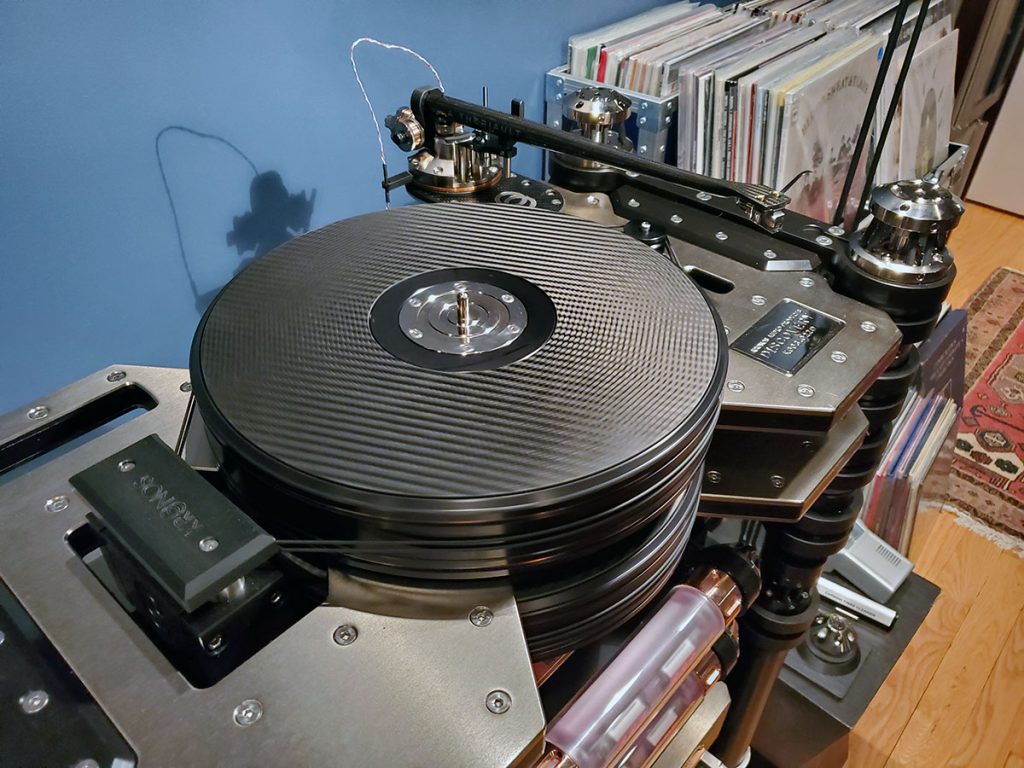
What Louis Desjardins has achieved with the Discovery, leveraging applied materials sciences, different isolation and stabilization methods, innovations to the controls, motors, regulators, motion feedback, and monitoring systems, as well as the enhancements in bearing strategy, application, and materials, and a distinctively reimagined tonearm approach, including its pivot and geometrical alignment schema, represents a wholesale advance and a new standard for the recovery of information from the Long Playing record…
In my experience, the world of hyper-audio LP playback is forever changed, as Discovery has established an entirely new standard, and by an exceptional margin. In fact, I would say the KRONOS Discovery is the finest audio source I have ever had the pleasure of hearing, one that, in my opinion, has ushered in a new level of musical experience and communication, establishing an innovative, high-water benchmark for LP playback. In my experience, it has established a new point of reference that may go unchallenged for some time.
Part 2 HERE
Part 3 HERE
All photographs by Greg Weaver, unless otherwise indicated.




